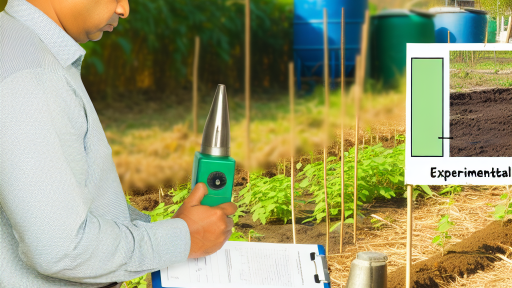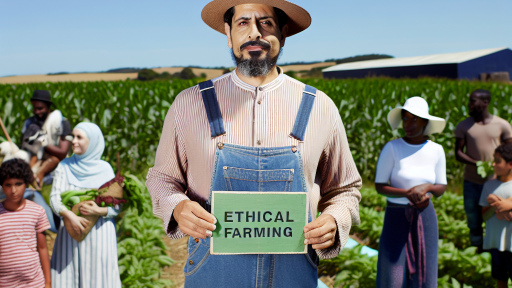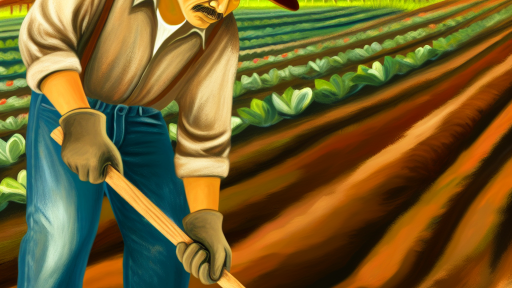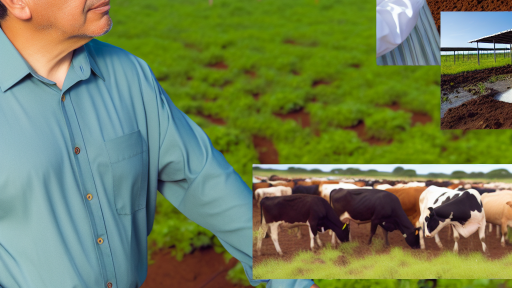Understanding the Basics of Community Supported Agriculture (CSA)
Definition of Community Supported Agriculture
Community Supported Agriculture connects consumers directly with local farmers.
Members pay upfront for a share of the harvest.
This arrangement helps farmers manage their production and finances.
Benefits of Community Supported Agriculture
CSA offers numerous benefits to both farmers and consumers.
Firstly, it provides farmers with a steady income.
Moreover, it creates a bond between producers and consumers.
This strengthens local economies and encourages sustainable practices.
Structural Components of a CSA
A typical CSA has three main components.
It includes the farmer, the subscribers, and the produce delivery system.
Farmers grow the crops based on the preferences of their members.
In turn, subscribers receive fresh produce regularly.
Types of Community Supported Agriculture Models
There are various models of CSA to choose from.
- Traditional CSA, where members receive a box of seasonal produce.
- Market-style CSA, allowing members to select their preferred items.
- Hybrid models, which may combine different features of both types.
How to Start Your Own CSA
Starting a CSA requires careful planning and organization.
First, evaluate your agricultural resources and land availability.
Next, establish a financial plan to cover start-up costs.
Transform Your Agribusiness
Unlock your farm's potential with expert advice tailored to your needs. Get actionable steps that drive real results.
Get StartedAdditionally, identify potential subscribers and promote your program.
Finally, create a clear communication system with your members.
Challenges in Community Supported Agriculture
While CSA offers benefits, it also presents challenges.
Farmers face risks from crop failures or price fluctuations.
Moreover, consistent communication with members is crucial.
Addressing issues promptly helps maintain trust and satisfaction.
Assessing Local Demand for CSA Programs
Understanding Community Needs
Start by identifying the community’s agricultural interests.
Conduct surveys to gather insights on local preferences.
Engage with community members through public forums.
Additionally, hold discussions with local farmers and vendors.
These actions will help you understand demand specifics.
Researching Competitors
Investigate existing CSA programs in the area.
Note their offerings, pricing, and membership numbers.
Evaluate their strengths and weaknesses thoroughly.
This information will shape your program’s unique proposition.
Identifying Potential Subscribers
Determine your target audience for the CSA program.
Focus on health-conscious consumers and environmental supporters.
Look for families interested in local produce options.
Consider niche markets like vegetarian or vegan communities.
Gathering Feedback
Create opportunities for community feedback.
Host tastings or workshops featuring local produce.
Use these events to gauge interest in a CSA subscription.
Additionally, ask for input on pricing and delivery preferences.
Building Relationships with Local Farmers
Establish connections with local agricultural producers.
Showcase Your Farming Business
Publish your professional farming services profile on our blog for a one-time fee of $200 and reach a dedicated audience of farmers and agribusiness owners.
Publish Your ProfileCollaborate to gain insights into seasonal crop availability.
Foster partnerships that benefit both parties.
These relationships can enhance your CSA offerings.
Steps to Create a Business Plan for Your CSA
Identify Your Mission and Goals
Start by defining the purpose of your Community Supported Agriculture (CSA) program.
Your mission should reflect your values and goals as a farmer.
Consider what you want to achieve in the local community.
Establish both short-term and long-term objectives that are realistic.
Conduct Market Research
Understand the demand for local produce in your area.
Identify your target audience and their preferences.
Analyze competitors to find your unique selling point.
Collect data through surveys and community engagement.
Develop a Detailed Financial Plan
Create a budget that outlines your expected costs and revenues.
Include expenses such as seeds, equipment, and marketing.
Forecast sales based on your market research findings.
Consider how you will price your share subscriptions competitively.
Outline Your Production Plan
Determine what crops you will grow and how much land you need.
Plan your planting and harvesting schedules to meet member needs.
Identify potential challenges, such as pests or weather events.
Incorporate sustainable farming practices to enhance productivity.
Create a Marketing Strategy
Develop a branding approach that resonates with your community.
Utilize social media and local events to promote your CSA.
Communicate the benefits of joining your CSA to potential members.
Design attractive and informative promotional materials.
Establish Membership Details
Decide on the number of shares you will offer each season.
Determine the length of the subscription period and payment terms.
Outline the member benefits, including produce availability and farm events.
Provide clear guidelines for member expectations and responsibilities.
Launch and Evaluate
Kick off your CSA with a community event to attract members.
Regularly seek feedback from your members to improve your offerings.
Monitor your financial performance to ensure sustainability.
Adjust your business plan based on seasonal changes and member input.
Find Out More: Creating a Subscription Box for Farm Products
Choosing the Right Crops for Your CSA
Assessing Local Climate and Soil Conditions
Understanding your local climate is crucial for crop selection.
Different crops thrive under specific climatic conditions.
Analyze your soil type to identify suitable crops.
Soil pH and nutrient content will play a significant role.
Additionally, consider the frost dates in your area.
This knowledge helps you choose the right planting and harvesting times.
Evaluating Market Demand
Research local consumer preferences to identify popular crops.
Seasonal availability can also influence what people want to buy.
Showcase Your Farming Business
Publish your professional farming services profile on our blog for a one-time fee of $200 and reach a dedicated audience of farmers and agribusiness owners.
Publish Your ProfileEngage with potential customers through surveys or community events.
Building relationships can help you gather valuable insights.
Focus on diversity to cater to a broader audience.
Examining Crop Growth Cycles
Understanding the growth cycles helps in planning your harvests.
Diverse planting can extend your selling season.
Consider both fast-growing and slower-maturing crops.
Align growth rates with market demand and your customer needs.
This ensures steady supply throughout the season.
Considering Resource Availability
Evaluate the resources you have for crop production.
Access to water is essential for healthy crops.
Consider the amount of labor available for planting and harvesting.
Introduce crops that require less intensive management if needed.
Using companion planting can improve yields and resource management.
Incorporating Crop Rotation Practices
Crop rotation helps maintain soil health and fertility.
It reduces the risk of pests and diseases in your fields.
Rotate crops according to their nutrient requirements.
This practice encourages biodiversity in your CSA farm.
Plan a rotation schedule to maximize your soil’s potential.
See Related Content: Ethical Animal Farming Challenges
Establishing Relationships with Local Farmers and Producers
Identifying Local Producers
Start by researching local farms in your area.
Look for producers who embrace sustainable practices.
Consider visiting farmers’ markets to connect personally.
Engage with community boards or online groups focused on local agriculture.
Building Trust and Communication
Approach farmers with respect and genuine interest.
Communicate openly about your goals and needs.
Establish regular meetings to discuss expectations.
Share your commitment to supporting local agriculture.
Creating Collaborative Opportunities
Explore potential partnerships with local farms.
Consider organizing community events together.
Create volunteer opportunities on the farm.
These interactions will strengthen your relationships.
Understanding Farmer Needs
Take time to understand the challenges farmers face.
Ask questions about their production methods.
Learn about their crop cycles and seasonal variations.
This knowledge fosters greater cooperation.
Supporting Local Economies
Promote the importance of buying from local producers.
Highlight the economic benefits within your community.
Encourage community members to participate in local CSA programs.
Consider forming a network to share resources and knowledge.
Explore Further: Overcoming Challenges in Farm-to-School Programs
Showcase Your Farming Business
Publish your professional farming services profile on our blog for a one-time fee of $200 and reach a dedicated audience of farmers and agribusiness owners.
Publish Your ProfileSetting Up Subscription and Payment Models for Customers
Choosing a Subscription Model
Select a subscription model that fits your farm’s needs.
Common choices include weekly, bi-weekly, or monthly deliveries.
Evaluate how often you can harvest crops for subscriptions.
Ensure your model aligns with customer preferences and local demand.
Additionally, offer flexible options to accommodate different lifestyles.
Determining Pricing Strategies
Set prices that reflect the value of your produce.
Research local market rates to stay competitive.
Consider offering discounts for larger subscriptions.
Introduce a tiered pricing system for different share sizes.
This approach can attract a wider customer base.
Selecting Payment Methods
Offer multiple payment options for convenience.
Common methods include credit/debit cards, PayPal, and checks.
Consider using automated billing systems for subscription renewals.
This reduces administrative work and ensures timely payments.
Furthermore, provide clear instructions for customers on payment options.
Building Customer Trust
Transparency fosters trust between you and your customers.
Clearly communicate what customers can expect in their shares.
Additionally, provide details on sourcing and harvesting practices.
Offer a satisfaction guarantee to boost customer confidence.
Encourage feedback to improve your service over time.
Marketing Your Subscription Service
Promote your subscription model across various channels.
Leverage social media to reach a broader audience.
Consider hosting promotional events for local communities.
Additionally, collaborate with local businesses for cross-promotion.
Utilize email newsletters to keep customers informed about new offerings.
Analyzing Performance and Adapting
Regularly analyze your subscription service’s performance.
Track customer retention rates and feedback consistently.
Adapt your offerings based on seasonal produce and customer preferences.
This will ensure that your service remains relevant and appealing.
Cultivating a responsive approach can enhance customer loyalty.
Explore Further: Harnessing Renewable Energy on Small Farms
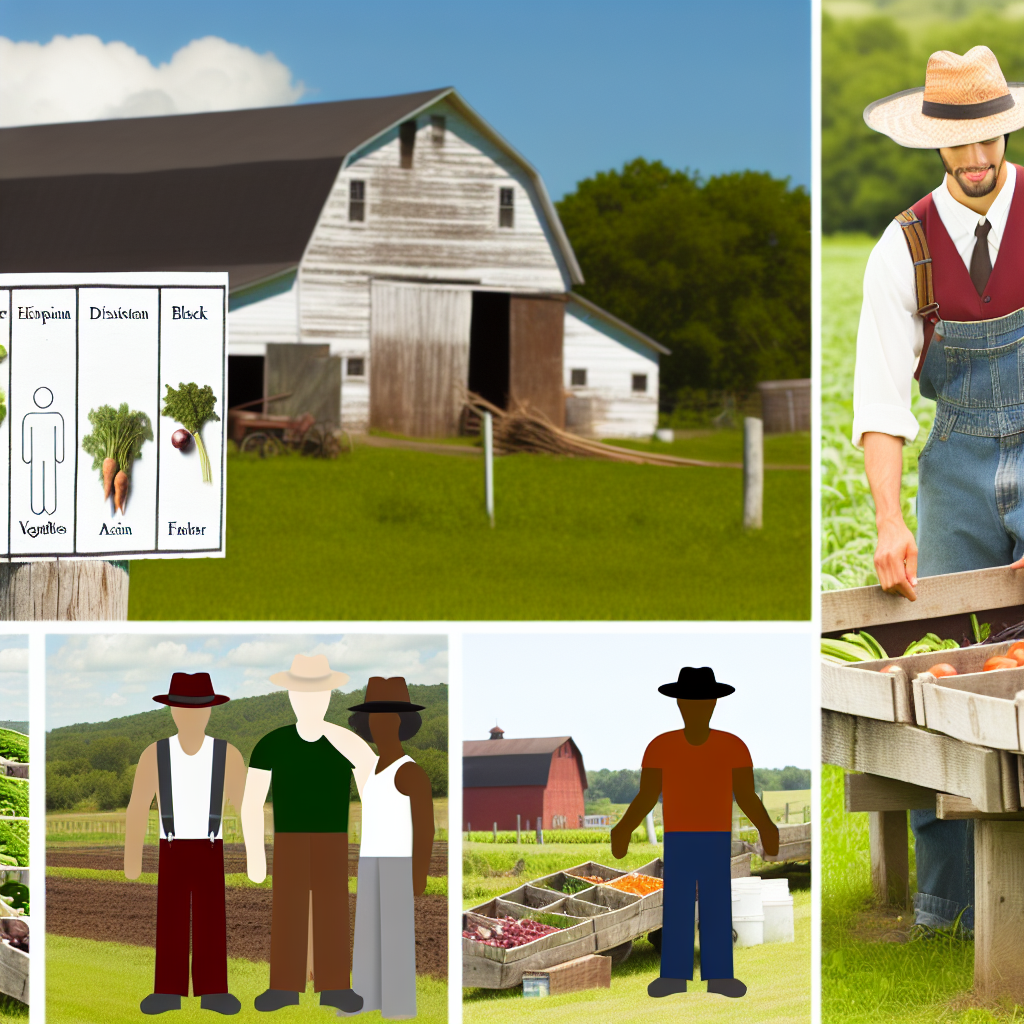
Marketing Strategies to Promote Your CSA
Identify Your Target Audience
Knowing your audience enhances your marketing efforts.
Start by defining who your potential customers are.
Consider demographics such as age and income level.
Additionally, think about lifestyle choices and values.
Research local preferences to better understand your market.
Create an Engaging Brand
A strong brand distinguishes your CSA from others.
Develop a unique name that resonates with your values.
Design a memorable logo that visually represents your mission.
Establish a cohesive message across all platforms.
Showcase Your Farming Business
Publish your professional farming services profile on our blog for a one-time fee of $200 and reach a dedicated audience of farmers and agribusiness owners.
Publish Your ProfileConsistently communicate your story to build connections.
Utilize Social Media
Social media offers a direct line to your audience.
Create profiles on popular platforms like Facebook and Instagram.
Share engaging content, such as farm updates and recipes.
Use stunning visuals to grab attention and encourage sharing.
Encourage followers to interact and provide feedback.
Host Community Events
Engaging the community fosters a sense of belonging.
Organize farm tours to showcase your operations.
Host workshops on sustainable living and cooking classes.
Plan seasonal events like harvest festivals for family fun.
Leverage these gatherings to promote membership sign-ups.
Offer Sampling Opportunities
Sampling lets potential customers experience your produce.
Set up booths at local farmers’ markets and events.
Provide samples of your products to entice new members.
Include information on how to join your CSA program.
Collect contact information for follow-up communication.
Collaborate with Local Businesses
Partnerships expand your reach within the community.
Connect with local restaurants that support farm-to-table.
Offer your produce to grocery stores and cafes.
Consider joint promotions to attract new customers.
Share each other’s social media content for mutual benefit.
Incorporate Email Marketing
Email marketing keeps your CSA top-of-mind.
Build an email list by offering special content discounts.
Send regular newsletters highlighting seasonal offerings.
Share recipes and tips to engage your subscribers.
Include calls to action for sign-ups and referrals.
Leverage Community Boards and Local Media
Local bulletin boards are valuable promotion tools.
Post flyers or announcements in community centers and cafes.
Engage with local newspapers and radio stations.
Pitch your story to generate interest in your CSA.
Utilize press releases to announce events or milestones.
Managing Logistics: Distribution and Delivery Options
Choosing the Right Delivery Method
Selecting a delivery method is crucial for your CSA.
You have multiple options to consider for effective distribution.
Direct delivery to members is one popular choice.
This can build stronger relationships with your community.
Alternatively, establishing drop-off points may enhance convenience.
It’s essential to customize methods to meet your members’ needs.
Establishing Pick-Up Locations
Pick-up locations can streamline your delivery process.
Consider partnering with local businesses for hosting drop-offs.
Farmers’ markets are also excellent choices for public access.
Showcase Your Farming Business
Publish your professional farming services profile on our blog for a one-time fee of $200 and reach a dedicated audience of farmers and agribusiness owners.
Publish Your ProfileMake sure locations are easily accessible for all members.
Promote these locations well to ensure member awareness.
Implementing a Subscription Schedule
A clear subscription schedule enhances customer satisfaction.
Consider weekly or bi-weekly deliveries based on demand.
Seasonal produce availability may influence this schedule.
Communicate changes promptly to your members.
This fosters trust and keeps customers engaged.
Tracking Deliveries Effectively
Implementing tracking systems for deliveries improves efficiency.
Consider using software solutions to manage your logistics.
Automated notifications can keep members informed about their orders.
This builds anticipation and reduces customer anxiety.
Ensure all delivery details are clear and accessible.
Managing Freshness and Quality Control
Prioritize freshness in your distribution methods.
Shorter delivery times will help maintain produce quality.
Implement cold storage solutions if necessary during transport.
Educate your team on handling fresh produce carefully.
This safeguards your reputation within the community.
Incorporating Sustainability Practices into Your CSA
Understanding Sustainability
Sustainability means meeting current needs without compromising future generations.
It emphasizes environmental stewardship and social responsibility.
Incorporating sustainability into your CSA can create lasting benefits.
Choosing Sustainable Farming Methods
Begin by selecting farming techniques that protect natural resources.
Utilize organic methods to reduce synthetic chemical usage.
Crop rotation helps maintain soil fertility and prevent pest outbreaks.
Consider permaculture principles to enhance ecosystem diversity.
Enhancing Soil Health
Healthy soil is critical for a successful CSA.
Implement cover cropping to prevent soil erosion and enhance nutrients.
Employ composting to recycle organic waste and build soil structure.
Encourage earthworm activity to improve aeration and drainage.
Water Conservation Techniques
Efficient water use is vital for sustainable farming.
Drip irrigation systems minimize water waste and target plants directly.
Collect rainwater to reduce dependency on municipal sources.
Implement mulch to retain moisture and suppress weeds.
Supporting Local Ecosystems
Your farming practices should contribute positively to local ecosystems.
Plant native species to promote local biodiversity.
Encourage pollinator habitats to support essential species.
Work with local wildlife to maintain natural pest control systems.
Educating Your Community
Engage your community through educational programs on sustainable practices.
Host workshops to teach sustainable gardening techniques.
Provide resources on the benefits of local food systems.
Promote awareness about reducing food waste among community members.
Showcase Your Farming Business
Publish your professional farming services profile on our blog for a one-time fee of $200 and reach a dedicated audience of farmers and agribusiness owners.
Publish Your ProfileBuilding a Resilient Supply Chain
Develop relationships with local suppliers and producers.
Source materials and seeds locally to enhance sustainability.
A resilient supply chain supports economic viability and environmental health.
Encourage members to join in cooperative purchasing initiatives.
Navigating Legal and Regulatory Requirements for CSAs
Understanding Local Regulations
Before starting a Community Supported Agriculture (CSA), familiarize yourself with local laws.
Every region has different regulations regarding agriculture and business practices.
Check with local agricultural departments for guidance on what’s required.
Additionally, consider zoning laws that might affect your agricultural activities.
Business Structure and Licensing
Selecting the right business structure is essential for your CSA.
Your options may include sole proprietorship, partnership, or corporation.
Consult a legal advisor to understand the implications of each structure.
After deciding, apply for the necessary business licenses within your state.
Health and Safety Regulations
Adhere to health and safety regulations to ensure food safety for your members.
This includes understanding sanitation standards for food handling and distribution.
Your local health department can provide the specific requirements needed.
Moreover, consider obtaining any certifications applicable to organic farming practices.
Insurance Considerations
Acquiring insurance can protect your CSA from various risks.
Evaluate different types of insurance appropriate for agricultural businesses.
Liability insurance is particularly important to safeguard against potential injuries.
Consult an insurance professional to determine the best coverage for your situation.
Creating Member Agreements
Drafting clear member agreements is critical for your CSA’s operation.
These agreements should outline member responsibilities and benefits.
Clearly state the terms regarding payment, delivery, and shared risks.
It’s wise to seek legal advice when creating these agreements.
Staying Informed
Stay updated on changes to laws that may impact your CSA.
Participate in local farming groups and organizations for support.
Networking can help you access valuable resources and legal updates.
Engaging with fellow farmers can also lead to collaborative opportunities.
Additional Resources
Opinion | Don’t Let Your Children Grow Up to Be Farmers – The New …
Leading the Farm to Table Movement in Greenville SC – Farm to …

